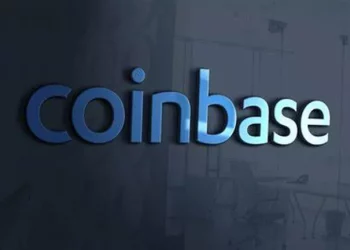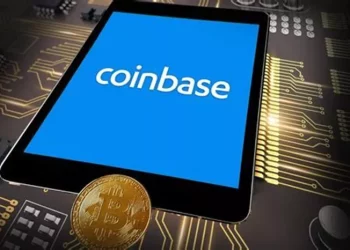Cryptocurrency staking has become an increasingly popular way for crypto investors to earn passive income by locking up their digital assets in a staking platform, allowing them to support the network and receive rewards in return. One of the most trusted platforms for staking in the cryptocurrency world is Kraken. Known for its robust security, variety of supported assets, and user-friendly interface, Kraken is a leading exchange that offers staking services to users.
If you are interested in staking your cryptocurrency assets and earning rewards, Kraken is an excellent choice for both beginners and experienced investors. In this article, we will take an in-depth look at what staking on Kraken entails, which cryptocurrencies you can stake on the platform, how staking works, the rewards you can expect, and important considerations to keep in mind when staking on Kraken.
What is Staking?
Before diving into which assets can be staked on Kraken, it’s important to understand what staking is and how it works. Staking refers to the process of participating in a proof-of-stake (PoS) blockchain network by holding and locking a certain amount of cryptocurrency in a wallet. In return for this commitment, you can earn rewards, typically in the form of additional cryptocurrency, which is distributed to stakers based on the amount of cryptocurrency they have staked.
In a PoS system, stakers help secure the network, validate transactions, and perform other critical functions. This is in contrast to proof-of-work (PoW) systems, like Bitcoin, which rely on miners to solve complex mathematical problems in order to validate transactions.
Staking has become an attractive option for cryptocurrency investors who want to maximize their earnings without the need for active trading. By staking your crypto on Kraken, you can earn regular rewards simply by holding your assets.
The Benefits of Staking on Kraken
Kraken offers several advantages for users who wish to stake their cryptocurrencies. These benefits make Kraken one of the most attractive exchanges for staking:
Variety of Supported Assets: Kraken supports a wide range of cryptocurrencies for staking. This provides users with plenty of options to choose from, depending on their investment preferences and risk tolerance.
User-Friendly Interface: Kraken’s staking platform is easy to use, making it suitable for both beginner and experienced crypto users. The process of staking, managing assets, and tracking rewards is straightforward.
Security: Kraken is known for its robust security measures. It has been in the cryptocurrency exchange business for years, and its reputation for protecting user funds is well-established. When you stake crypto on Kraken, your assets are stored in a secure environment.
Staking Rewards: Kraken provides competitive staking rewards, which can be higher than traditional savings accounts, making it an attractive passive income opportunity. Staking on Kraken is a great way to grow your crypto portfolio.
No Fees for Staking: Kraken charges no fees for staking. The only fees involved are the network fees, which are generally minimal.
Flexibility: Kraken offers flexibility when it comes to staking durations. You can stake your assets for varying periods, which allows you to tailor your staking strategy based on your personal financial goals.
Automatic Reinvestment: Kraken also offers automatic staking rewards reinvestment, so your earned rewards are compounded by being added back to your staked amount. This increases your potential earnings over time.
What Cryptocurrencies Can I Stake on Kraken?
Kraken offers staking for a variety of cryptocurrencies. The list of assets available for staking can evolve as new coins and tokens join the platform. Here are some of the most popular cryptocurrencies that can be staked on Kraken as of now:
1. Ethereum 2.0 (ETH)
Ethereum 2.0 is a major upgrade to the Ethereum blockchain that aims to shift from a proof-of-work (PoW) consensus mechanism to a proof-of-stake (PoS) mechanism. Ethereum 2.0 staking is highly popular on Kraken, and it is one of the largest staking assets available on the platform. By staking Ethereum, you can participate in the network’s upgrade while earning rewards.
Annualized Rewards: Ethereum staking rewards can vary, but they generally range between 4% to 6% annually.
Staking Process: Staking ETH on Kraken is easy. You can stake a minimum of 0.1 ETH, and there is no upper limit for the amount you can stake.
2. Polkadot (DOT)
Polkadot is a multi-chain blockchain protocol that enables different blockchains to interoperate. Polkadot uses a nominated proof-of-stake (NPoS) mechanism, where users can stake DOT tokens either as validators or nominators. By staking DOT on Kraken, you can help secure the network and earn rewards in the process.
Annualized Rewards: Staking rewards for Polkadot typically range from 12% to 15%.
Staking Process: Kraken allows users to stake DOT with as little as 1 DOT. The rewards are paid out periodically, and there is no lock-up period for staked assets.
3. Cardano (ADA)
Cardano is a blockchain platform that uses a proof-of-stake consensus mechanism known as Ouroboros. Cardano’s staking mechanism is designed to be highly secure and efficient. By staking ADA on Kraken, users can support the network while earning rewards.
Annualized Rewards: Cardano’s staking rewards generally range from 4% to 6% annually.
Staking Process: Staking ADA on Kraken is simple. The platform allows users to stake as little as 1 ADA, with rewards distributed periodically.
4. Solana (SOL)
Solana is a high-performance blockchain that uses a combination of proof-of-history (PoH) and proof-of-stake (PoS) to achieve fast transaction speeds and low fees. Staking SOL tokens on Kraken is an easy way to support the Solana network while earning rewards.
Annualized Rewards: Staking rewards for Solana typically range from 6% to 8% annually.
Staking Process: Solana staking on Kraken is available with a minimum stake of 0.01 SOL.
5. Tezos (XTZ)
Tezos is a self-amending blockchain that uses a proof-of-stake mechanism. Tezos aims to provide a more energy-efficient alternative to traditional proof-of-work blockchains. By staking XTZ on Kraken, users can earn rewards for helping to maintain the network.
Annualized Rewards: Tezos staking rewards generally range from 5% to 6% annually.
Staking Process: Kraken allows users to stake Tezos with as little as 1 XTZ, and there are no lock-up periods.
6. Algorand (ALGO)
Algorand is a blockchain platform designed to provide high scalability and fast transaction speeds while maintaining a high degree of decentralization. It uses a pure proof-of-stake (PPoS) consensus mechanism, which allows users to earn rewards by staking ALGO.
Annualized Rewards: Algorand staking rewards typically range from 5% to 7% annually.
Staking Process: Users can stake ALGO with no minimum amount on Kraken. The rewards are distributed regularly, and the process is simple to follow.
7. Cosmos (ATOM)
Cosmos is a decentralized network of independent blockchains that can communicate with each other. Cosmos uses the Tendermint consensus mechanism, which is based on proof-of-stake. By staking ATOM on Kraken, users can earn rewards and help secure the Cosmos Hub.
Annualized Rewards: Cosmos staking rewards typically range from 7% to 9% annually.
Staking Process: Kraken allows users to stake ATOM with a minimum of 1 ATOM, and rewards are paid out regularly.
8. Kava (KAVA)
Kava is a decentralized finance (DeFi) platform that allows users to earn rewards through staking. Kava supports multiple assets and uses a proof-of-stake consensus mechanism to validate transactions.
Annualized Rewards: Kava staking rewards generally range from 7% to 10%.
Staking Process: Kava allows users to stake KAVA tokens with a minimum stake amount of 1 KAVA.
How Does Staking on Kraken Work?
Staking on Kraken is designed to be straightforward, even for those who are new to cryptocurrency or staking. The process typically involves the following steps:
1. Create a Kraken Account
To start staking, you need to have a Kraken account. If you don’t already have one, visit Kraken’s website and sign up. The platform requires you to verify your identity before you can deposit funds and begin staking.
2. Deposit Cryptocurrency
Once your Kraken account is set up, deposit the cryptocurrency you wish to stake into your Kraken wallet. You can deposit assets by transferring them from another exchange or wallet.
3. Choose the Cryptocurrency to Stake
After your assets are deposited, navigate to the staking section of the Kraken platform. Here, you will see a list of supported assets for staking. Select the cryptocurrency you wish to stake and click on it.
4. Start Staking
Once you’ve selected your cryptocurrency, Kraken will show you the option to start staking. Follow the instructions to stake your assets. Kraken will automatically begin staking your cryptocurrency and earning rewards on your behalf.
5. Monitor Your Rewards
You can monitor your staking rewards directly from the Kraken platform. The rewards are generally paid out at regular intervals, and you can reinvest your rewards or withdraw them as you see fit.
Rewards and Fees for Staking on Kraken
Kraken does not charge any fees for staking. However, there are some small network fees associated with staking, which are typically minimal and vary depending on the cryptocurrency being staked. The staking rewards you receive on Kraken will depend on the asset you stake and the network conditions at the time.
Conclusion
Staking on Kraken offers an excellent opportunity for cryptocurrency investors to earn passive income by participating in the proof-of-stake networks of various cryptocurrencies. With a wide range of supported assets, easy-to-use interfaces, and competitive staking rewards, Kraken is one of the top platforms for staking in the crypto space. By staking cryptocurrencies such as Ethereum, Polkadot, Cardano, and others, users can help secure the networks while growing their portfolios.
If you are considering staking on Kraken, be sure to conduct your own research and evaluate which assets best align with your investment strategy. Staking offers a way to passively earn rewards, but it’s important to understand the risks and mechanics involved. By staking responsibly and regularly monitoring your rewards, you can maximize the potential benefits of staking on Kraken.
Related topics:
Is It Safe to Stake on Kraken?

















